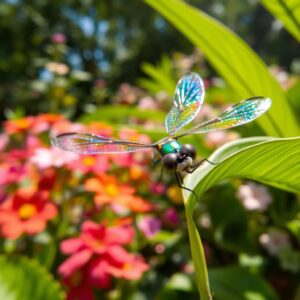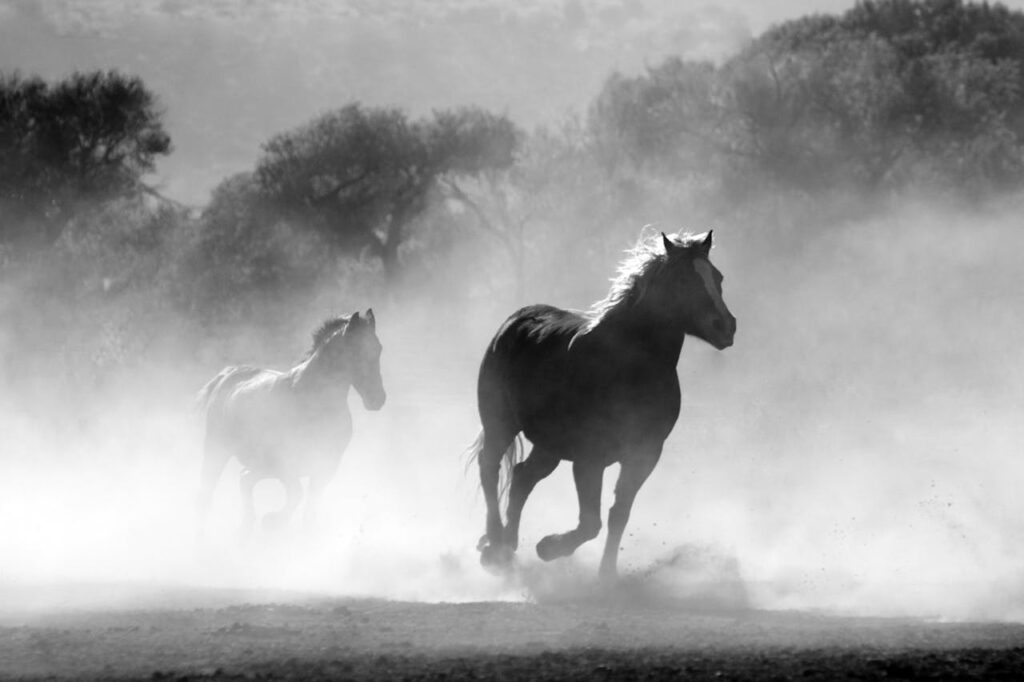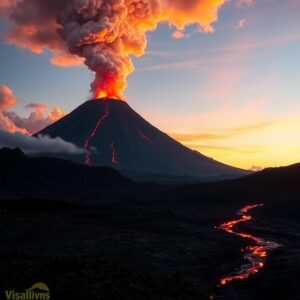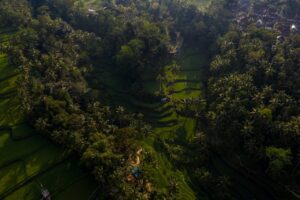
Explore & Play
Discover interesting topics and solve the accompanying crossword puzzle.
Wild Crossword | Beauty of Untamed Landscapes and Wildlife
Table of Contents
Welcome to our exploration of wild landscapes! Before diving into the article, you have the option to play the Wild crossword to test your knowledge and engage with the topic. If you’re not yet familiar with these fascinating environments, feel free to read the article first for a deeper understanding, and then come back to the crossword for some fun. Enjoy your journey into the wild!
Wild Crossword
You can either fill in the crossword puzzle directly on this page or click the button in the bottom right corner to print it for free.

Wild Landscapes: A Journey Through Earth’s Untamed Beauty
In our vast world, wild landscapes teem with life and breathtaking beauty, offering a glimpse into the untamed wonders of nature. From towering mountains to lush rainforests, these regions not only provide stunning vistas but also serve as vital habitats for countless species. As you explore this article, you’ll discover the remarkable diversity of wildlife that thrives in these settings, along with the importance of preserving these landscapes for future generations. Be sure to check out the accompanying crossword puzzle featuring animals and landscapes from the wild—it’s a fun way to enhance your understanding of these magnificent environments!
I. The Beauty of Wild Landscapes
Wild landscapes are not just beautiful; they are vital ecosystems that support countless forms of life. These areas are characterized by their untamed nature, often untouched by human intervention, allowing flora and fauna to flourish in their natural habitats.
A. Definition of Wild Landscapes
What exactly constitutes a wild landscape? Typically, these areas are defined by their natural features, which include mountains, forests, savannas, deserts, and wetlands. Each landscape type supports a unique set of wildlife and vegetation, creating a rich tapestry of life. For instance, a mountain range may host diverse ecosystems at different elevations, while a savanna is known for its open grasslands dotted with trees.
B. Importance of Preserving Wild Landscapes
Preserving wild landscapes is crucial for maintaining biodiversity and ecological balance. These ecosystems provide essential services, such as clean air and water, carbon storage, and soil stability. Moreover, they serve as refuges for endangered species, making conservation efforts paramount. By protecting these areas, we safeguard not only the wildlife that inhabits them but also the health of our planet.
II. Iconic Wild Landscapes Around the World
From towering mountains to dense rainforests, each region of the world showcases unique wild landscapes that captivate the imagination. Exploring these areas reveals the stunning diversity of nature and the intricate connections between wildlife and their habitats.
A. Mountainous Regions
The majestic mountains serve as habitats for many extraordinary species. These elevated terrains, often capped with snow, present a breathtaking sight and a challenging environment. Animals such as snow leopards and bears have adapted remarkably to these harsh conditions. For instance, snow leopards possess thick fur and long tails, which help them navigate the rocky slopes and icy temperatures, while bears utilize their keen sense of smell to locate food even in the frigid conditions.
In addition to the breathtaking scenery, mountainous regions are shaped by dynamic geological processes. Glaciers, which slowly move down the slopes, carve out valleys and contribute to the unique ecosystems found in these areas. The melting glaciers also provide essential water sources for rivers and lakes below, creating diverse habitats for aquatic life. Moreover, the varying altitudes and climates found within mountainous regions lead to distinct ecological zones, each supporting different flora and fauna. From alpine meadows filled with wildflowers to dense coniferous forests, these areas exemplify the rich biodiversity of mountainous landscapes.
B. Tropical Rainforests
The lush, vibrant life found in rainforests is unparalleled. These biodiverse ecosystems are known for their staggering variety of species, with rainforests housing approximately half of the world’s plant and animal species despite covering only about 6% of the Earth’s surface. Notable inhabitants include jaguars, sloths, and an array of colorful birds, such as toucans and parrots. The complex layers of vegetation in rainforests create unique microhabitats. The emergent layer, where towering trees reach above the canopy, provides a home for birds and insects, while the understory is a rich environment for small mammals and reptiles.
The dense canopy of the rainforest provides shelter and food for countless birds, insects, and mammals. Vines and epiphytes, which grow on trees without harming them, create a three-dimensional ecosystem teeming with life. Unfortunately, these rainforests face significant threats from deforestation and climate change. Logging, agriculture, and urbanization have led to rapid habitat loss, putting immense pressure on wildlife populations. As a result, the preservation of these vital ecosystems has become more critical than ever, not just for the species that inhabit them, but for the global climate, as they play a crucial role in carbon sequestration.
C. Arid Deserts
Deserts may seem barren at first glance, but they are home to resilient species and striking beauty. The harsh conditions challenge life, yet animals like wild boars, camels, and various reptiles have evolved remarkable adaptations to survive. For instance, the fennec fox, with its large ears, dissipates heat and helps it thrive in the extreme temperatures of the Sahara. Many desert plants, such as cacti, have developed specialized features to conserve water, such as thick skins and deep root systems.
Sand dunes, shaped by wind, create stunning landscapes that change with time, adding to the mesmerizing beauty of arid regions. The patterns of shifting sands and rocky outcrops contribute to the diverse geology found in deserts. Despite their arid nature, deserts offer a surprising variety of life and landscapes, from rocky plateaus to salt flats. Seasonal rains can bring a spectacular burst of life to these areas, showcasing a vivid array of wildflowers and attracting migratory birds. These temporary blooms remind us of the resilience of life in even the most challenging environments.
D. Savannas
Savannas are open grasslands that support large herds of herbivores, including zebras, giraffes, and antelopes. These landscapes are characterized by their sparse trees and expansive plains, which provide ample grazing opportunities for herbivores. The cyclical nature of life in the savanna is shaped by the seasonal rains that dictate the availability of food and water. During the wet season, the savanna comes alive with lush grasses and blooming plants, drawing animals to the area.
Predators, such as lions, cheetahs, and hyenas, roam these areas, contributing to the delicate balance of life. The predator-prey relationships in savannas are crucial for maintaining the health of these ecosystems. Predators help regulate herbivore populations, preventing overgrazing and ensuring that vegetation can recover. The interactions between different species create a dynamic and vibrant ecosystem, where every organism plays a role in sustaining the environment.
E. Coastal Ecosystems
The coastline offers a unique blend of wildlife and landscapes, including coral reefs, mangroves, and sandy beaches. Coastal ecosystems are essential for the health of our oceans and provide critical habitats for fish and other marine life. Coral reefs, often referred to as the rainforests of the sea, are teeming with biodiversity and serve as vital breeding grounds for many fish species. The vibrant colors and intricate structures of coral create a habitat that supports a diverse array of marine organisms.
Ocean waves crash against rocky shores, shaping the land and creating beautiful vistas. The interplay between land and sea produces a rich environment where tidal pools offer a glimpse into the fascinating life forms that inhabit them. Coastal areas are also highly vulnerable to human activities, such as pollution and coastal development. Protecting these ecosystems is crucial for maintaining biodiversity and ensuring the survival of numerous species that depend on these habitats. Conservation efforts, such as establishing marine protected areas, are vital in preserving these precious ecosystems for future generations.
III. Wildlife in Wild Landscapes
The connection between wildlife and wild landscapes is essential for the survival of both. Every species plays a vital role in maintaining the balance of their ecosystem, contributing to the intricate web of life that sustains our planet. Understanding these relationships highlights the importance of conservation efforts to protect both wildlife and their habitats.
A. Predators and Prey
Understanding the food chain is crucial to grasping the dynamics of wild ecosystems. Predators, such as lions, wolves, and eagles, are essential for regulating populations of prey species. This predatory relationship ensures that no single species overwhelms the habitat, which can lead to overgrazing and depletion of resources. For example, in the African savanna, lions hunt herbivores like wildebeest and zebras, which helps maintain a balanced population of these grazers. When predator populations are stable, they keep the ecosystem healthy and thriving.
Scavengers like hyenas and vultures also play a key role in these ecosystems. By feeding on the remains of dead animals, they help break down organic matter and recycle nutrients back into the environment. This process is vital for nutrient cycling, ensuring that essential elements like nitrogen and phosphorus return to the soil, supporting plant growth and, in turn, herbivores. The interconnectedness of predators, prey, and scavengers illustrates the complexity of wild ecosystems and underscores the importance of each species in maintaining ecological balance.
In many ecosystems, the presence of apex predators can have a profound effect on the entire environment. For instance, the reintroduction of wolves to Yellowstone National Park led to a cascade of ecological changes, demonstrating the critical role predators play in shaping their habitats. The wolves helped control the elk population, which allowed vegetation to recover in overgrazed areas, leading to increased biodiversity and healthier ecosystems.
B. Adaptations to Environment
Animals have developed unique adaptations to thrive in their respective wild habitats. These adaptations can be physiological, behavioral, or structural, enabling wildlife to survive in diverse conditions, from the cold tundras to the humid rainforests.
For instance, the thick skin of elephants serves not only as protection from harsh environments but also helps regulate their body temperature. In contrast, the large ears of African elephants aid in dissipating heat, allowing them to thrive in warm climates. Similarly, camels possess specialized adaptations, such as the ability to store fat in their humps and tolerate dehydration, enabling them to endure the extreme conditions of arid deserts.
The agility of cheetahs allows them to chase down prey in the savanna with remarkable speed, making them one of the fastest land animals. Their lightweight bodies, long legs, and specialized respiratory systems enhance their ability to sprint, which is crucial for catching swift prey like gazelles. In rainforests, the colorful plumage of birds like toucans and parrots serves as both a form of communication and a means of camouflage among the vibrant foliage.
Moreover, some species have developed behaviors that enhance their survival. For example, meerkats exhibit cooperative behaviors, working in groups to alert each other of potential predators. This social structure helps ensure the safety of the group, showcasing the importance of community in the animal kingdom.
These adaptations highlight the incredible diversity of wildlife and their ability to thrive in various environments. As ecosystems continue to face challenges from climate change and human activities, understanding these adaptations becomes crucial for conservation efforts. Protecting habitats and the species that inhabit them ensures that the intricate web of life remains intact and that wildlife can continue to flourish in their wild landscapes.
IV. Threats to Wild Landscapes and Wildlife
Despite their beauty and ecological importance, wild landscapes face numerous threats that jeopardize their existence. Understanding these challenges is the first step toward finding solutions and ensuring that future generations can experience the wonders of nature.
A. Climate Change
Climate change poses a significant risk to the stability of various ecosystems across the globe. Rising temperatures can alter weather patterns, affecting precipitation and, in turn, the flora and fauna that depend on consistent climates. For example, as global temperatures increase, regions that once enjoyed temperate weather may experience prolonged droughts or severe storms.
In tropical regions, altered rainfall patterns can disrupt the delicate balance of rainforest ecosystems. Species that rely on specific weather conditions for reproduction, feeding, or migration may struggle to adapt to rapid changes. Coral reefs, often referred to as the “canaries of the ocean,” are particularly vulnerable to climate change. Ocean acidification and rising sea temperatures lead to coral bleaching, which jeopardizes the diverse marine life that depends on these habitats for survival.
Moreover, extreme weather events, such as hurricanes and wildfires, can devastate landscapes, leading to habitat loss and threatening wildlife populations. For instance, increased frequency and intensity of hurricanes can destroy coastal ecosystems, including mangroves and wetlands, which serve as critical buffers against storm surges and provide essential habitat for many species. Similarly, wildfires, exacerbated by hotter temperatures and prolonged droughts, can ravage forests, displacing wildlife and altering entire ecosystems.
As habitats change or disappear altogether, species face the risk of extinction. The interconnected nature of ecosystems means that the loss of one species can have cascading effects on others, leading to further biodiversity loss. Therefore, addressing climate change is vital for the conservation of wild landscapes and their inhabitants.
B. Human Activity
Human activity remains one of the most pressing threats to wild landscapes and wildlife. Deforestation, pollution, and urbanization continue to encroach upon wild areas, leading to significant habitat destruction. Forests, which are vital for carbon sequestration and biodiversity, are often cleared for agriculture, logging, and infrastructure development. This not only reduces the size of habitats but also fragments them, making it difficult for species to migrate, find food, and reproduce.
Pollution, whether from industrial runoff, plastic waste, or agricultural chemicals, further endangers wildlife and their ecosystems. Contaminated water sources can lead to health problems for animals and disrupt the delicate balance of aquatic ecosystems. Terrestrial species, too, suffer the consequences of pollution, with chemicals entering food chains and causing long-term health issues, including reproductive failures and population declines.
Urbanization poses another challenge, as expanding cities encroach on natural habitats. Roads, buildings, and other infrastructures disrupt migratory patterns and isolate populations, making it increasingly difficult for species to thrive. Many animals are forced to adapt to urban environments, which often results in conflicts with humans, such as vehicle collisions or predation on livestock.
Conservation efforts are vital to mitigate these impacts and ensure that wildlife has a place to thrive. Initiatives such as establishing national parks, wildlife reserves, and protected areas are essential in safeguarding valuable ecosystems. These areas not only provide refuge for endangered species but also promote biodiversity and contribute to the overall health of the planet.
In addition, community engagement in conservation practices can enhance the effectiveness of these initiatives. By involving local populations in the management and protection of their natural resources, we can foster a sense of stewardship and ensure that conservation efforts are sustainable and culturally relevant.
In conclusion, while wild landscapes and wildlife face significant threats, understanding these challenges is the first step toward developing effective solutions. Through collective efforts in conservation, education, and sustainable practices, we can work towards preserving the beauty and integrity of our planet’s wild spaces for future generations to enjoy.
V. The Role of Conservation
Conservation plays a pivotal role in preserving wild landscapes and the wildlife that inhabits them. By actively engaging in preservation efforts, we can help safeguard the future of our planet.
A. Protecting Natural Habitats
Establishing protected areas helps safeguard vulnerable ecosystems. National parks and wildlife reserves provide sanctuaries for endangered species, allowing populations to recover and thrive. These protected spaces also enable scientists to study and monitor wildlife, ensuring that conservation strategies are effective.
B. Community Involvement
Local communities often play an integral role in conservation efforts. By involving residents in preservation initiatives, we can foster a sense of stewardship for the environment. Successful community-led projects demonstrate how local knowledge and resources can contribute to effective conservation strategies. For example, ecotourism can provide financial incentives for communities to protect their natural resources.
VI. Exploring the Wild: Adventure Awaits
For many, experiencing wild landscapes firsthand is an unforgettable adventure. These excursions not only foster a deeper appreciation for nature but also highlight the importance of preserving these beautiful areas.
A. Outdoor Activities
From hiking through mountains to kayaking along rivers, there are countless ways to explore the wild. Engaging in outdoor activities allows individuals to connect with nature while also promoting physical health. Each adventure offers a unique perspective on the beauty and complexity of wild landscapes, making it essential to respect and protect these areas.
B. Wildlife Watching
Observing wildlife in their natural habitats can foster a deeper appreciation for nature. Responsible wildlife watching promotes conservation by encouraging people to value the beauty of wild animals in their environments. Simple practices, such as maintaining a safe distance and minimizing noise, ensure that wildlife remains undisturbed, allowing for more meaningful interactions with nature.
Embracing the Call of the Wild
As we journey through the wild landscapes of our planet, we are reminded of the beauty and complexity of nature. Each landscape holds unique stories, and each species plays a crucial role in maintaining ecological balance. By understanding the importance of these ecosystems and the wildlife they support, we can work together to preserve them for future generations.
Ready to dive deeper into the world of the wild? Challenge yourself by playing the crossword puzzle and uncovering the fascinating animals and landscapes that inhabit our planet!
Share to...
I hope you enjoy the content.
Want to receive our daily crossword puzzle or article? Subscribe!
You may also be interested in
Share to…
Want to receive our daily crossword puzzle?
-
Jigsaw Puzzles
Zodiac Ink Dog Puzzle: Artful Elegance 250 | 300 | 500 Pieces
kr 348,00 – kr 439,00Price range: kr 348,00 through kr 439,00 Select options This product has multiple variants. The options may be chosen on the product page -
Jigsaw Puzzles
Autumn Whiskers and Pumpkin Paws Puzzle 250 | 300 | 500 Pieces
kr 348,00 – kr 439,00Price range: kr 348,00 through kr 439,00 Select options This product has multiple variants. The options may be chosen on the product page -
Jigsaw Puzzles
Zodiac Ink Art Puzzle: The Playful Monkey 250 | 300 | 500 Pieces
kr 348,00 – kr 439,00Price range: kr 348,00 through kr 439,00 Select options This product has multiple variants. The options may be chosen on the product page

















